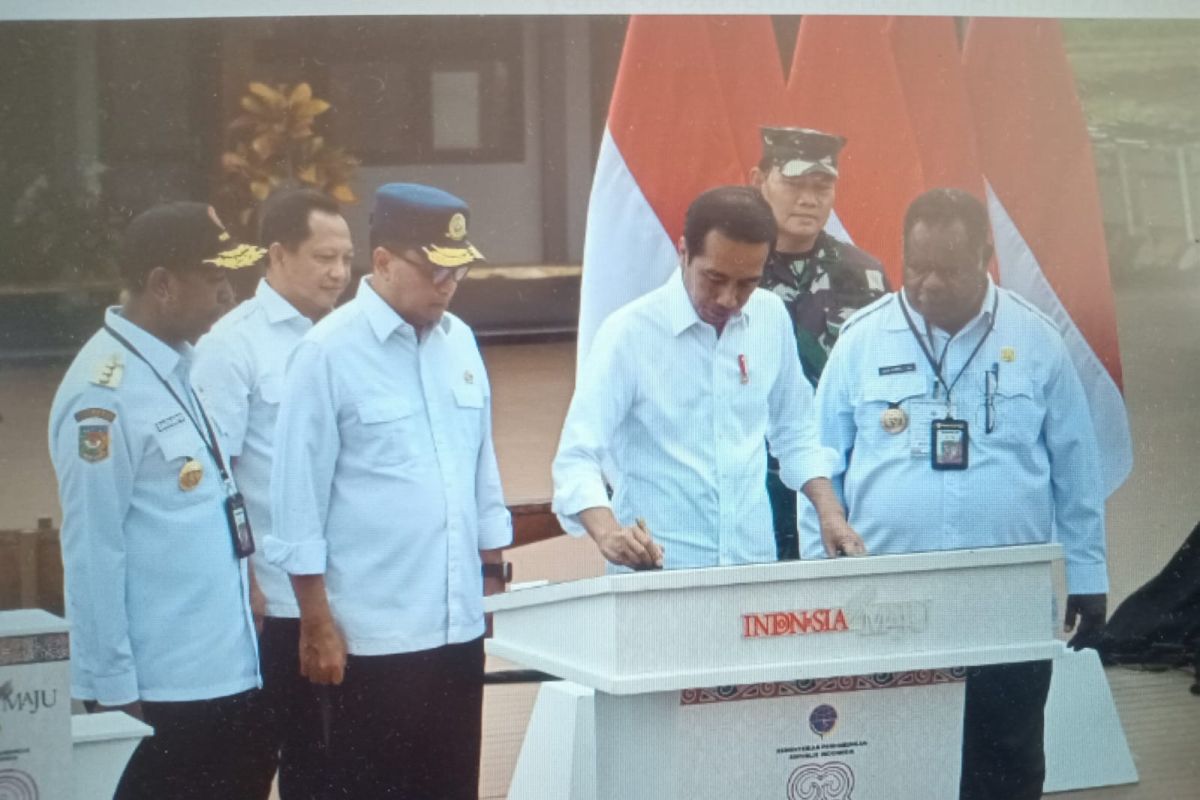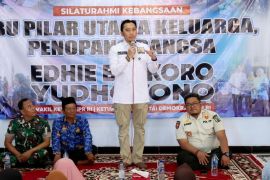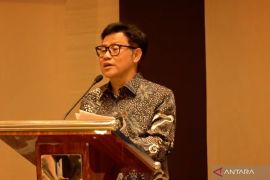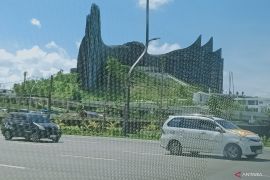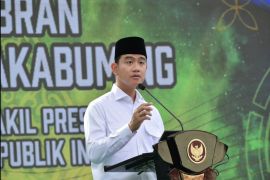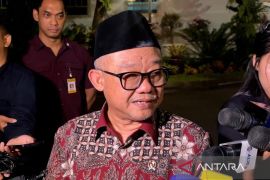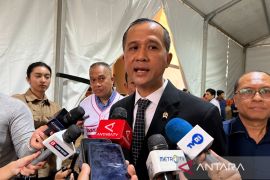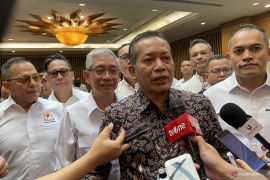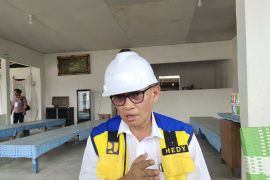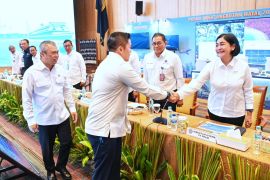One of the main objectives of the government is translating the concept of Indonesia-centric development into reality in the hopes of leading Indonesia to progress, strengthening unity, and achieving a higher level of prosperity.
The government has been striving to implement such a concept of equitable development to distribute progress equally to all regions of Indonesia, including those in remote areas, thereby serving those living outside Java Island better than ever before.
However, in order to be successful in its initiative, the government requires comprehensive support from all elements of the country, given that equitable development can significantly benefit all Indonesians.
Numerous measures have been taken by the government to implement Indonesia-centric development, including constructing essential infrastructure and facilities equally in regions across the country, from Sabang in the west to Merauke in the east. In fact, the government has also been paying close attention to the frontier, outermost, and remote (3T) regions.
Intensive efforts to realize equitable development are not merely expected to support economic growth but also strengthen Indonesia’s national resilience, which in turn, will help the country maintain a conducive situation at home.
It should be noted that the idea of Indonesia-centric development also encompasses the importance of bringing progress to people residing in the eastern regions of Indonesia.
One of the government’s most prominent efforts in pushing Indonesia-centric development to manifest is the construction of transport infrastructure on a massive scale. In this context, President Joko Widodo’s (Jokowi’s) administration has been making remarkable efforts to build and polish more toll roads, sea ports, bus terminals, railways, train systems, and airports.
Transportation sector
Minister of Transportation Budi Karya Sumadi has repeatedly stated that under the 10 years of the leadership of President Jokowi, Indonesia has been gradually moving toward equitable development, bidding farewell to Java-centric development in the past.
"We have been boosting connectivity by adopting Indonesia-centric development, breaking free from development that is centered on Java. We have been constructing various facilities, including ferry ports, at 71 locations across Indonesia," Minister Sumadi remarked during a press conference in Jakarta on December 20 last year.
He noted that in an effort to provide basic services and bolster connectivity, the Ministry of Transportation has been developing infrastructure in the transportation sector for four main means of transportation.
In addition to constructing 71 ferry ports, the ministry has been revitalizing other ports at 54 locations, developing type A bus terminals at five locations, and revitalizing alike terminals at 140 locations.
The government has also been making tremendous efforts to develop new ports at 18 locations, revitalize ports at 164 locations, construct about 1,683 km of railway lines, and conduct revitalization on 1,900 km of railway lines.
Moreover, the Transportation Ministry had successfully developed the Jakarta-Bandung “Whoosh” High-speed Train, light rail transit (LRT) train systems in Jakarta and South Sumatra, and Makassar-Parepare Train in South Sulawesi.
The Makassar-Parepare Train system was developed, with a total investment value of Rp9.28 trillion (US$596 million). The train is currently operating on routes stretching 110 kilometers that also cover the districts of Maros and Barru, with 10 active stations in total.
Since 2018, the people of Palembang City, South Sumatra, have been enjoying reliable train service offered through an LRT system. The LRT train, developed with investment totaling Rp12.5 trillion (US$803 million) has continued to record a significant increase in the number of passengers every year.
The total number of people making the most of the LRT service stood at 3,712,254 last year, with a daily average figure reaching 10,983.
It is safe to say that the government’s initiative to develop reliable train systems on Sulawesi and Sumatra islands is a testament to its seriousness in pushing for equitable development in Indonesia.
The operation of the Whoosh fast train was officiated by President Jokowi on October 2, 2023. Whoosh marks the first fast train service in Indonesia and Southeast Asia that operates at speeds of up to 350 kilometers per hour, significantly cutting the travel time between Jakarta and West Java’s Bandung, from three hours to only about 40 minutes.
Whoosh trains operate on a 142.3-km-long track, with 13 tunnels, and stop at four stations: Halim, Karawang, Padalarang, and Tegalluar.
Furthermore, during the 2015-2023 period, the government had been building 25 new airports and polishing 38 existing ones.
The construction of several airports has been completed, including the Ewer Airport in South Papua Province, Siboru Airport in West Papua Province, and Mentawai Airport in West Sumatra Province.
The three airports have been declared as part of the government’s national strategic projects that are meant to bring 3T regions out from isolation. A higher level of regional accessibility is believed to be instrumental in facilitating the movements of people and logistics that, in turn, is expected to stimulate the emergence of new spots of economic growth.
The Ewer Airport, opened in July 2023, has terminals with a total area of 488 square meters that can accommodate as many as 14 thousand passengers on an annual basis. The construction of the airport began in 2018 and concluded in 2022, with a total budget of Rp287 billion allocated from the State Budget (APBN).
ATR 72-600 type aircraft, transporting people or goods, can be accommodated by the Ewer Airport, as its runways have a total length of 1,650 x 30 meters. The Ewer Airport is designed as a highly strategic central point that serves flights from and to larger airports as well as flights to inland regions in Papua.
Meanwhile, the Siboru Airport, inaugurated in November 2023, is home to terminals spanning 4,600 square meters of land. The government allocated Rp891 billion (US$57.4 million) of the APBN to develop the airport that has a capacity of 153,945 passengers per year.
The airport is meant to replace the existing Torea Airport and serve as an air bridge in West Papua, connecting Fakfak District to other regions, including Sorong and Timika.
Another airport recently inaugurated in the Papua region, namely the Douw Aturure Airport in Central Papua’s Nabire District, was opened by President Jokowi in November last year. The airport was built to connect Nabire to several cities in Papua, such as the Papua provincial capital of Jayapura.
President Jokowi had also personally inaugurated the Mentawai Airport in West Sumatra Province in October 2023. The airport’s terminals sit on a total area of 1,600 square meters and wield the capacity to serve over 53 thousand passengers annually.
Mentawai Airport’s runways stretch across 1,500 x 30 meters of land and are fully capable of serving as landing grounds for ATR 72-600 planes, with a capacity of 78 people. Meanwhile, the existing nearby airport, Rokot Sipora, can only accommodate smaller aircraft, such as the Cessna Grand Caravan that can only transport a maximum of 12 people at once.
The Mentawai Airport was built in the hopes of boosting connectivity between Padang City and Mentawai Islands District.
The existence of several transport infrastructure and facilities built across Indonesia is highly expected to boost the tourism potential in various regions. Now, it is the regional governments’ turn to capitalize on the infrastructure developed, with the end goal of not only shooting up regional economies but also Indonesia’s economy nationally.
Related news: Govt building Patimban Port to support equitable development: Minister
Related news: Green energy can boost Indonesia's equitable development: President
Related news: Equitable investment in regions puts Indonesia-centric goal in sight
The government has been striving to implement such a concept of equitable development to distribute progress equally to all regions of Indonesia, including those in remote areas, thereby serving those living outside Java Island better than ever before.
However, in order to be successful in its initiative, the government requires comprehensive support from all elements of the country, given that equitable development can significantly benefit all Indonesians.
Numerous measures have been taken by the government to implement Indonesia-centric development, including constructing essential infrastructure and facilities equally in regions across the country, from Sabang in the west to Merauke in the east. In fact, the government has also been paying close attention to the frontier, outermost, and remote (3T) regions.
Intensive efforts to realize equitable development are not merely expected to support economic growth but also strengthen Indonesia’s national resilience, which in turn, will help the country maintain a conducive situation at home.
It should be noted that the idea of Indonesia-centric development also encompasses the importance of bringing progress to people residing in the eastern regions of Indonesia.
One of the government’s most prominent efforts in pushing Indonesia-centric development to manifest is the construction of transport infrastructure on a massive scale. In this context, President Joko Widodo’s (Jokowi’s) administration has been making remarkable efforts to build and polish more toll roads, sea ports, bus terminals, railways, train systems, and airports.
Transportation sector
Minister of Transportation Budi Karya Sumadi has repeatedly stated that under the 10 years of the leadership of President Jokowi, Indonesia has been gradually moving toward equitable development, bidding farewell to Java-centric development in the past.
"We have been boosting connectivity by adopting Indonesia-centric development, breaking free from development that is centered on Java. We have been constructing various facilities, including ferry ports, at 71 locations across Indonesia," Minister Sumadi remarked during a press conference in Jakarta on December 20 last year.
He noted that in an effort to provide basic services and bolster connectivity, the Ministry of Transportation has been developing infrastructure in the transportation sector for four main means of transportation.
In addition to constructing 71 ferry ports, the ministry has been revitalizing other ports at 54 locations, developing type A bus terminals at five locations, and revitalizing alike terminals at 140 locations.
The government has also been making tremendous efforts to develop new ports at 18 locations, revitalize ports at 164 locations, construct about 1,683 km of railway lines, and conduct revitalization on 1,900 km of railway lines.
Moreover, the Transportation Ministry had successfully developed the Jakarta-Bandung “Whoosh” High-speed Train, light rail transit (LRT) train systems in Jakarta and South Sumatra, and Makassar-Parepare Train in South Sulawesi.
The Makassar-Parepare Train system was developed, with a total investment value of Rp9.28 trillion (US$596 million). The train is currently operating on routes stretching 110 kilometers that also cover the districts of Maros and Barru, with 10 active stations in total.
Since 2018, the people of Palembang City, South Sumatra, have been enjoying reliable train service offered through an LRT system. The LRT train, developed with investment totaling Rp12.5 trillion (US$803 million) has continued to record a significant increase in the number of passengers every year.
The total number of people making the most of the LRT service stood at 3,712,254 last year, with a daily average figure reaching 10,983.
It is safe to say that the government’s initiative to develop reliable train systems on Sulawesi and Sumatra islands is a testament to its seriousness in pushing for equitable development in Indonesia.
The operation of the Whoosh fast train was officiated by President Jokowi on October 2, 2023. Whoosh marks the first fast train service in Indonesia and Southeast Asia that operates at speeds of up to 350 kilometers per hour, significantly cutting the travel time between Jakarta and West Java’s Bandung, from three hours to only about 40 minutes.
Whoosh trains operate on a 142.3-km-long track, with 13 tunnels, and stop at four stations: Halim, Karawang, Padalarang, and Tegalluar.
Furthermore, during the 2015-2023 period, the government had been building 25 new airports and polishing 38 existing ones.
The construction of several airports has been completed, including the Ewer Airport in South Papua Province, Siboru Airport in West Papua Province, and Mentawai Airport in West Sumatra Province.
The three airports have been declared as part of the government’s national strategic projects that are meant to bring 3T regions out from isolation. A higher level of regional accessibility is believed to be instrumental in facilitating the movements of people and logistics that, in turn, is expected to stimulate the emergence of new spots of economic growth.
The Ewer Airport, opened in July 2023, has terminals with a total area of 488 square meters that can accommodate as many as 14 thousand passengers on an annual basis. The construction of the airport began in 2018 and concluded in 2022, with a total budget of Rp287 billion allocated from the State Budget (APBN).
ATR 72-600 type aircraft, transporting people or goods, can be accommodated by the Ewer Airport, as its runways have a total length of 1,650 x 30 meters. The Ewer Airport is designed as a highly strategic central point that serves flights from and to larger airports as well as flights to inland regions in Papua.
Meanwhile, the Siboru Airport, inaugurated in November 2023, is home to terminals spanning 4,600 square meters of land. The government allocated Rp891 billion (US$57.4 million) of the APBN to develop the airport that has a capacity of 153,945 passengers per year.
The airport is meant to replace the existing Torea Airport and serve as an air bridge in West Papua, connecting Fakfak District to other regions, including Sorong and Timika.
Another airport recently inaugurated in the Papua region, namely the Douw Aturure Airport in Central Papua’s Nabire District, was opened by President Jokowi in November last year. The airport was built to connect Nabire to several cities in Papua, such as the Papua provincial capital of Jayapura.
President Jokowi had also personally inaugurated the Mentawai Airport in West Sumatra Province in October 2023. The airport’s terminals sit on a total area of 1,600 square meters and wield the capacity to serve over 53 thousand passengers annually.
Mentawai Airport’s runways stretch across 1,500 x 30 meters of land and are fully capable of serving as landing grounds for ATR 72-600 planes, with a capacity of 78 people. Meanwhile, the existing nearby airport, Rokot Sipora, can only accommodate smaller aircraft, such as the Cessna Grand Caravan that can only transport a maximum of 12 people at once.
The Mentawai Airport was built in the hopes of boosting connectivity between Padang City and Mentawai Islands District.
The existence of several transport infrastructure and facilities built across Indonesia is highly expected to boost the tourism potential in various regions. Now, it is the regional governments’ turn to capitalize on the infrastructure developed, with the end goal of not only shooting up regional economies but also Indonesia’s economy nationally.
Related news: Govt building Patimban Port to support equitable development: Minister
Related news: Green energy can boost Indonesia's equitable development: President
Related news: Equitable investment in regions puts Indonesia-centric goal in sight
Translator: Ahmad W, Tegar Nurfitra
Editor: Azis Kurmala
Copyright © ANTARA 2024
